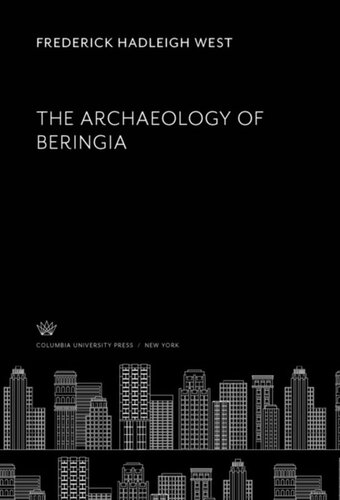

Most ebook files are in PDF format, so you can easily read them using various software such as Foxit Reader or directly on the Google Chrome browser.
Some ebook files are released by publishers in other formats such as .awz, .mobi, .epub, .fb2, etc. You may need to install specific software to read these formats on mobile/PC, such as Calibre.
Please read the tutorial at this link: https://ebookbell.com/faq
We offer FREE conversion to the popular formats you request; however, this may take some time. Therefore, right after payment, please email us, and we will try to provide the service as quickly as possible.
For some exceptional file formats or broken links (if any), please refrain from opening any disputes. Instead, email us first, and we will try to assist within a maximum of 6 hours.
EbookBell Team

4.1
40 reviewsTwelve thousand years ago a climatic warming trend submerged the remains of the land bridge between Siberia and Alaska. The indigenous population of the vast plain that linked Siberia to Alaska was forced to emigrate to the east. Long considered merely a passageway, Beringia, in Frederick Hadleigh West's view, is better understood as a complete biotic province unto itself, home for early peoples, and an important center of dispersion for many species. The Archaeology of Beringia is West's painstaking synthesis of all recent findings on the inland hunters of Beringia and their unique arctic culture. West shows how the prehistoric Beringians, with their skills of big game hunting and their advanced stone technology, flourished under the unusual environmental circumstances that existed in this Far Northern province. The Beringian tradition, according to West, was the direct forebear of Clovis culture, the earliest Palaeo-Indian tradition. Through the use of extensive English and Russian sources, the author documents the existence of a great regional Beringian culture. West's thesis has profound implications for theories on the evolution of native American cultures. To detail the nature of the late Pleistocene era, West has marshalled relevant evidence from the disciplines of geology, palynology, glaciology, and palaeoclimatology. His theories have developed from his own extensive archaeological and ecological studies in Alaska. The author's premise is a challenging one. In presenting all available data-the book is heavily illustrated-The Archaeology of Beringia will prove an indispensable source as research continues.
Examines the ancient province of Beringia and its role in shaping the floristic and faunistic history of north western North America and Northeastern Siberia.